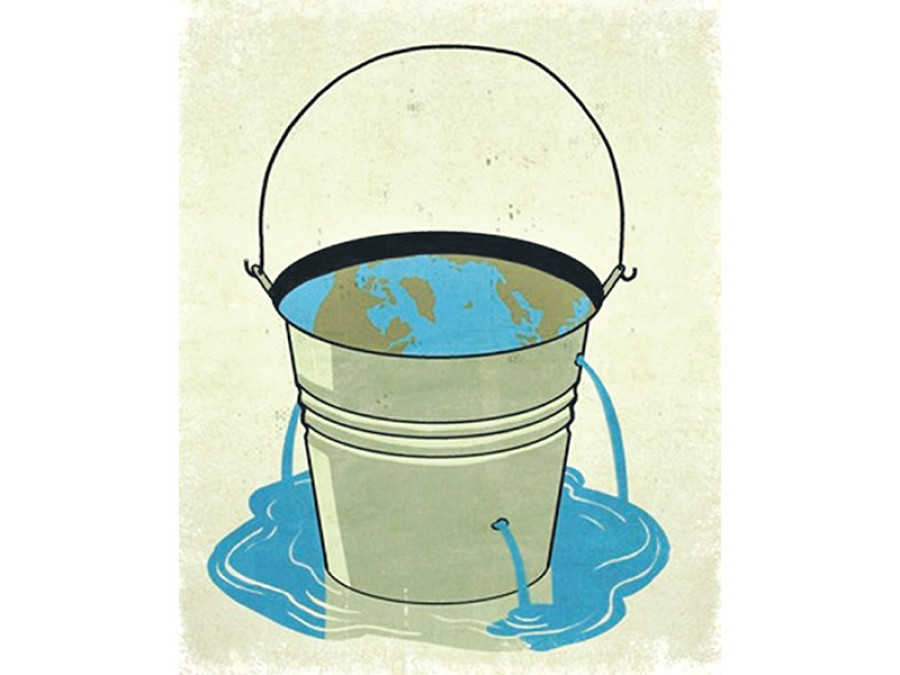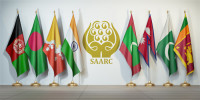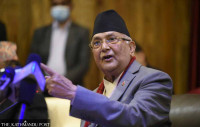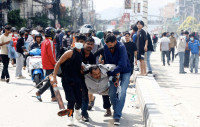Opinion
Harnessing water
A holistic approach is needed to build the resilience of communities to climate change
Jagadish C. Baral
It is a dream come true for Sane Damai and his wife of Ghoksila, Sindhuli to be able to grow paddy on their land as they could never imagine such a thing in the past due to the scarcity of water. Likewise, Dor Prasad of the same village has lately ventured into growing horticultural crops like pomegranate and mango on his field which is fairly dry. Santosh Thapa has started a number of ventures like rearing goats and growing vegetables on his farm. These developments became possible after the village drinking water supply was augmented lately by extending the main pipe that brings water all the way from Mahabharat Lekh. This had become necessary because the original source at Chapa Khola nearby had virtually dried up, leaving the people desperate situation. The project was mainly meant to supply drinking water, but some innovative people like Sane have made use of the surplus water for other purposes.
The newly-installed water scheme has brought relief to the villagers whose life has been made hard by adversities like climate change, water scarcity, frequent droughts and recurrent crop failures. Many of those who can afford to move have already left the village for the valley floor or elsewhere because of the water scarcity. While cases like that of Sane may give hope to others residing in Ghoksila, the area is still far from being a pleasant place to live. This is the reason why the village sees constant out-migration which has been further heightened by the recent devastating earthquake. Not many villagers are as farsighted as Sane to benefit from the new opportunities brought by the water supply. Large swathes of the more than 1,200 ropanis of agricultural fields in the village lie virtually abandoned. Many of the farms are owned by absentee landlords.
The examples of innovative people cited above may have encouraged others to follow suit, but constraints remain with water scarcity being the main problem. Providing irrigation facilities, which requires the diversion of water from the Ghoksila Khola to the parched village, is a priority. This could open up opportunities in agriculture, horticulture, livestock and fishery. Innovative ideas from people like Sane may be useful for generating confidence among the rest of the villagers. If simultaneous efforts in the education and health sectors are made, the health of the villagers would also improve. People will then have no reason to leave the village, and even those who had moved out may return. Those who do not want to come back to the village can be persuaded to rent out their fields for a nominal payment to poor farmers, thus creating a win-win situation.
While bringing water from the Ghoksila Khola by building irrigation channels may provide relief to the villagers from the present crisis, it is not a long-term solution. The water level in the Ghoksila Khola could drop in the future because of climate change and inappropriate land use systems in its major catchment areas like Khaniya Kharka and Naya Kharka. There will thus be very little water left in the river to make harnessing projects viable unless the current depletion trend can be effectively checked. This calls for cautious intervention to revive the condition of the watershed along with attempts to harness the water and put it to optimum use.
The climate change projects being implemented in the country could borrow ideas from the example in Ghoksila. For instance, the National Adaptation Programmes of Action and Local Adaptation Plans of Action under the National Climate Change Support Programme have been intervening in a number of hill districts in western Nepal. While the project intends to support local communities to adapt to climate change, the interventions are more of a piecemeal in nature than the required holistic approach. Sporadic gully control, catchment ponds, small-scale irrigation and plantations are the type of activities they have been running, and they are far from adequate for the local people in the catchment areas to be able to adapt to climate change. While the project does not rule out the possibility of irrigation, it is not the focus of the intervention effort.
Likewise, the project pays little attention to watershed conservation without which a sustained flow of water will not be possible, thus making it totally irrelevant for any purpose including irrigation. Building climate resilience of the watershed in mountain eco-regions is another project which is being implemented in western Nepal with the support of the Asian Development Bank. This project has put some emphasis on catchment conservation, but refrains from supporting the local communities to harness the water, a key aspect of climate adaptation. Thus, both the projects seem to be short-sighted towards their idea of improving community resilience to climate change.
The country now wants to take the climate adaptation issue further by preparing a National Adaptation Plan (NAP). Given that our practical knowledge to effectively intervene in climate adaptation is definitely lacking, the writing of the NAP may be largely constrained by grounded and demonstrated knowledge. So, the best idea would be to do a holistic piloting in improving climate resilience at the local level by focusing on some catchment areas such as the Ghoksila Khola. A mismatch between the politically determined village development committee boundaries and the geographically identified catchment-based boundaries is one of the major puzzles that needs to be solved while developing interventions.
Baral is a former joint secretary of the Ministry of Forest and Soil Conservation




 8.12°C Kathmandu
8.12°C Kathmandu










